Causes of this behavior in a pet include, but are not limited to, the following:
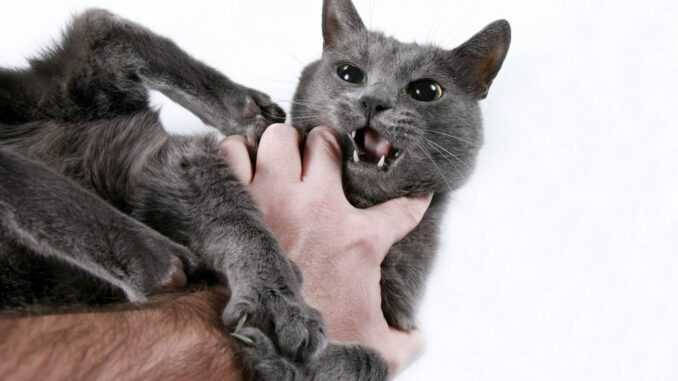
- Why does a cat lunge at its feet?
- Manifestation of hunting instinct
- Restlessness or anxiety
- How do I wean a cat from throwing itself at its owner's feet?
- You'll also be interested in:
- How do you deal with this cat behavior?
- A few more recommendations
- What the owner should do in response to cat aggression
- Scold
- Reeducate
- Showing care
- Examples of the most aggressive breeds
- Siamese
- Savannah
- Abyssinian
- Why does the cat suddenly pounce on the hand or leg of its owner
- Why do cats attack the hand or leg of their owners in the first place ❓.
- Cats should not be offended, because they have an explainable reason:
- Causes of cat attacks
- How to wean a cat from clawing its legs
- 😺5 reasons why a cat grabs his legs
Why does a cat lunge at its feet?
Manifestation of hunting instinct
Cats are carnivores, and they have a very strong hunting instinct that can manifest itself in a variety of ways. When a cat throws itself on its legs, it may be a manifestation of its hunting instinct and a normal behavior for cats.
For cats, leg throwing can be a game that helps them develop and improve their hunting skills. They may see their owners' feet as prey and try to "attack" them as if it were a mouse or bird. Leg play may also be a manifestation of their desire to catch and kill prey.
In kittens who are just beginning to learn the world, this instinct can be especially strong. They may often throw themselves at their owners' feet because they have not yet learned to control their instincts. However, even adult cats can sometimes exhibit this behavior, especially if they feel a strong need to play and be entertained.
Although tossing on their feet may seem unpleasant or even dangerous, it is important to understand that it is simply natural behavior for cats and they will not become aggressive or vicious. In addition, leg play can be good for a cat's health and physical activity, which is an important factor in its overall well-being.
If a cat throws himself on his feet, it is important to understand that this behavior needs to be regulated and to educate the cat on what games and behaviors are undesirable. You can redirect the cat's attention to toys or other objects that he can attack instead of your feet. It is also helpful to teach the cat "no" or "calm" commands so that it understands when its behavior is not desirable.
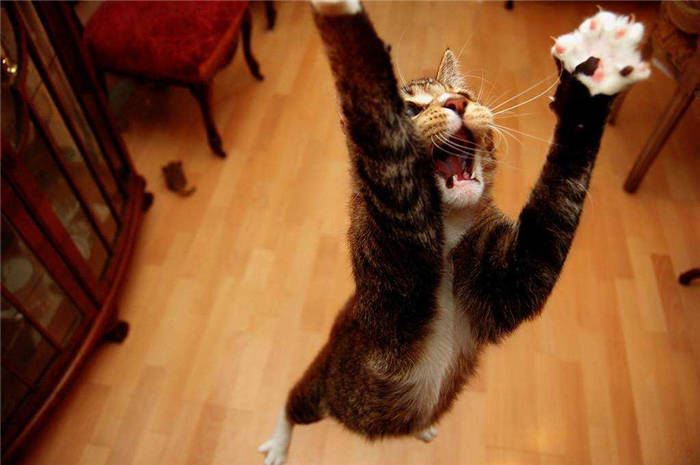
Restlessness or anxiety
Cats can lash out not only because of their hunting instinct, but also because they are anxious or worried. If a cat is stressed or feels threatened, it may become more defensive and aggressive.
How do I wean a cat from throwing itself at its owner's feet?
It is possible to wean a cat from lunging at her owner's feet, but it will take time and patience. Here are some tips to help you solve the problem:
- Determine the reason for the cat's behavior: before you start correcting your cat's behavior, it's important to understand why she lunges at her feet. If it is due to lack of attention, you need to give her more time and attention. If it is because the cat is bored, try to provide it with more toys and entertainment.
- Use toys: give the cat enough toys to play with and have fun with. Cats love to play with lanyards, balls and other toys. Toys will help the cat to let its energy out and distract it from lunging at you.
- Use a scratching post: Cats have a need to sharpen their claws and if they don't have a place to do it, they may start sharpening them on furniture or on you. Provide a scratching post that is comfortable for the cat and teach him to use it.
- Don't punish the cat: punishing it will not teach it to lunge, as it will only encourage it to behave more aggressively. Instead, use positive reinforcement, encourage her when she shows desirable behavior.
- Don't play with the cat when he lunges: if the cat starts lunging at you, stop playing with him immediately and move away from him. This will help him understand that this behavior is not desirable.
- Talk to your vet: on rare occasions the cat's behavior could be due to illness or stress. If you can't figure out why your cat is lunging, see your veterinarian for a consultation.
Keeping your cat from lunging is a process that will take patience and effort, but it is possible if you are consistent and learn to understand your cat's needs.
You'll also be interested in:
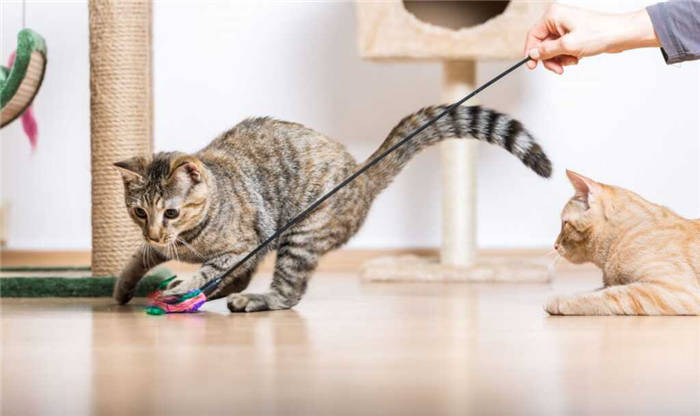
How do you deal with this cat behavior?
However, if the episodes of attack on your feet do not stop and the scratches are getting deeper, then you need to take steps to wean the cat from throwing itself on your feet. So, what can be done in this situation:
- Give the pet the maximum amount of attention. Be sure to find time every day for active games. But you must play with the cat when it wants to, not when it sleeps peacefully on the window sill and you suddenly remember that you have to play with it. Use a variety of play equipment for your games: a ball for the cat to run after; a soft toy with which you can "wrestle"; a game rod will allow you to play as a predator;
- Organize a space around it that is as interesting to the cat as possible. You can buy interesting toys or make them yourself. Also offer the favorite cat regularly empty cardboard boxes, bags – fluffy things like these items madly. You can buy the cat a puzzle toy, this can distract it from your feet for a long time. But periodically you need to hide the toy so that it will not bore the cat. Also, play sets, scratching post etc. are great for keeping the cat occupied;
- Give the cat a time out. If you feel that the initially innocent play with your foot is gaining momentum and the cat is so "wound up" that its aggression is beyond your control, take a break. Leave the room, close the door behind you. Just don't do it the other way around! It is not necessary to pick up the cat in your arms and take it to another room, you have to leave the room yourself and let the pet understand the cause-and-effect relationship between his actions and yours;
- Try to prevent an attack. Usually the cat will jump out of hiding, uncover his spot and before the cat jumps out of there, start moving toward him. This will confuse your pet, because to him your feet are the prey and he himself is the predator. If you move toward him this will break the cat's concept of prey, because the prey is not going to meet the predator, but is running away from him;
- Limit access to the places from which the cat lunges at you. You can force them with something or do a small rearrangement. This will make the fluffy cat look for a new place, and this will distract him from you for a while.
A few more recommendations
Weaning and educating a cat to bite, scratch, and lunge is a fascinating activity. But here it is important to remember constant repetition and some patience on the part of the person. Some tips will help in this:
- If your pet has an unrestrained, wild and hunting temperament, give her more attention, play with her and use different rattles, toys. Tools like these are an instant distraction from hands and feet;
- If the cat already has a persistent habit of throwing and biting, you should stop the game immediately when his teeth touch your skin;
- A scratching post can solve the problem, especially if it is equipped with special rods and toys;
- If the cat does not want to learn, use anti-scratchers – special silicone pads that stick to the paws and do not allow harm to others;
- In rare, most neglected cases, you can resort to a special operation to remove the claws of the cat completely. But this can be very traumatic for the cat;
- If the pet crosses the line and can't stop his games, use sounds or try to scare the animal by throwing a towel over him. Then the cat will remember that biting is fraught with unpleasant consequences.
It's important to be patient and not back down or follow your pet's lead in raising the cat. The earlier you start training and the more often you repeat the above steps, the less likely your cat will develop the bad habit of scratching, biting and throwing. Veterinarians can also help in correcting behavior, but without effort on the part of the owner, you should not expect results.
All furry pets are small children who need attention, care and education. So try to be attentive to the requests and needs of cats, but never use aggression and physical punishment. This will only make the relationship with the cat worse, it will be more aggressive and vicious. This will be reflected in the relationship with other animals and people around them.
What the owner should do in response to cat aggression
If the owner is fed up with the constant attacks from the pet, it is necessary to start educating it. The owner should do everything possible to ensure that the cat has no desire to lunge at a child or bystanders.
Scold
You should not scold a cat when it tries to attack its owner. The feline temperament is such that these animals can remember the insults they have suffered.
The best way is not to scold, but simply to ignore. This means completely unresponsive behavior, even with words. Only then will the cat understand the reason for the owner's attitude.
Reeducate
When reeducating the pet, the following recommendations should be followed:
- Do not play with the cat's hands and feet;
- Buy only those toys that allow you to play at a distance from the owner (rods, wrappers on a string);
- if the cat clings to your hand, do not pull it out sharply. In this situation it will become even more angry and will only increase its aggression. You should wait for a while until the cat will let go of your hand and then stop playing. This way the cat will understand that aggressive behavior is a reason to stop playing and communicating with the owner;
- to make the kitten grow up calm and peaceful, you should give it more time, love and affection;
- in the process of education, be patient with the animal, do not beat him. Education should be accompanied by patience on the part of the owner. The animal should be helped to realize the bad behavior.
Important! Training and education of the pet should be carried out from the first days of appearance in the house. Only in this case, the process will be effective.
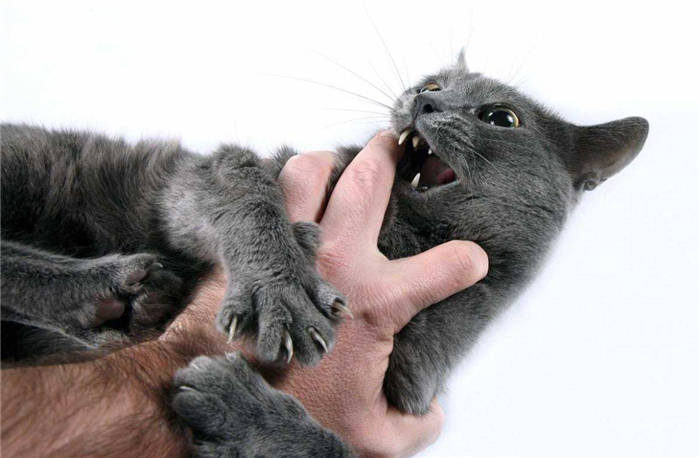
Showing care
Showing care, affection and love is an important rule in combating a cat's desire to pounce on its owner. Manifestations of care include:
Examples of the most aggressive breeds
Siamese
Many pet lovers prefer Siamese cats because they are very beautiful in appearance. However, not everyone knows that as pets, they are not the friendliest around. Siamese cats and cats are known for communicating mostly with only one owner in the house, and the other family members are jealous of him.
Important! They can literally completely ignore everyone else in the house. They do not like children and are not very affectionate with anyone other than their beloved master.
Not respecting other people, representatives of the breed easily fall into an aggressive state and can even cause serious wounds.

Savannah
The cat breed has a direct blood relationship with the Serval and Siamese cat. The animal is characterized by vigor, mobility, leaping, and inquisitiveness.
Predator habits are clearly pronounced, hence the aggressive behavior towards the owner. Like Siamese cats, Savannahs choose a single owner and are looked down upon by others.
Hunting instincts inherited from the serval, sometimes require careful monitoring by the owner and education from childhood.
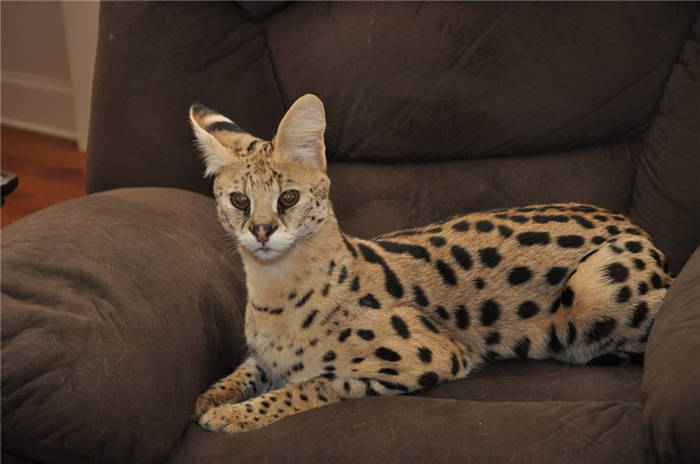
Abyssinian
Abyssinian cats have a very lively temperament and natural curiosity. Until old age they remain agile and restless. Some people compare the nature of the animal with a dog. High mobility is often accompanied by attacks of aggression, especially during play.
Important! From childhood, the breed has no sense of fear and self-preservation, so education is required from an early age.

Why does the cat suddenly pounce on the hand or leg of its owner
Our favorite cats are interesting pets, their behavior often seems strange and incomprehensible to us. For example, we love, care for and feed our cats, but they start suddenly attacking our hands or feet, biting and scratching with their back paws.
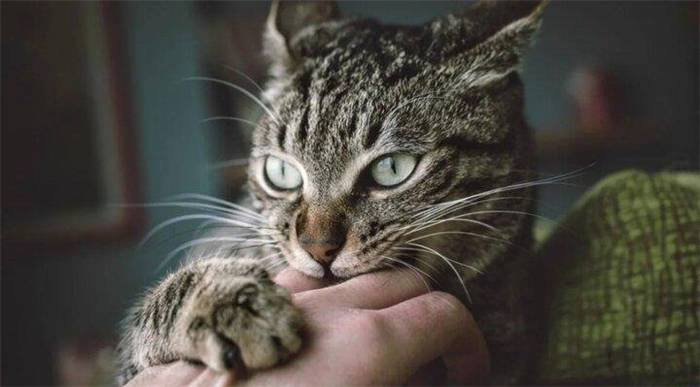
Usually it goes like this: you're sitting on the couch, not touching anyone, and suddenly a sudden attack on your arm or leg. It happens for a few seconds, and then the cat runs away abruptly. This is just one example, in fact, it happens differently for each owner and in different situations. We will give some basic reasons why a cat may suddenly bite its owner from a scientific and psychological point of view.
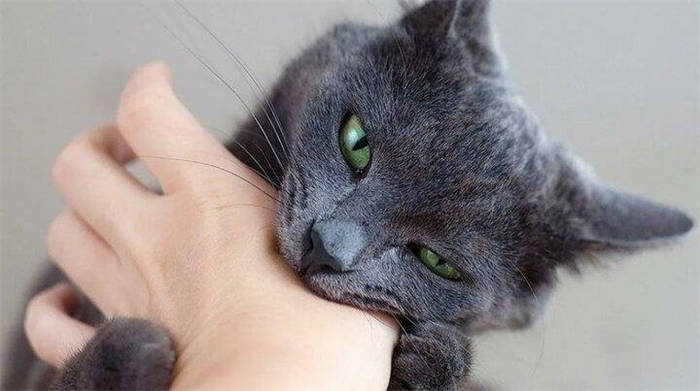
Just like humans, cats have harmful temperaments, such cats are referred to the choleric type. They have moments when they are annoyed by everything, even the owner, who sits and wiggles his leg or hand. It is at such a moment that the cat will suddenly attack the owner's hand, even while being stroked.
If you have accustomed the cat to play with your hand or leg since childhood, as an adult it will attack your hand or leg from time to time. This habit of cats calls for a game of hunter with her, as she is used to from an early age.
Such a characteristic applies more to alpha cats, which consider themselves the dominant pets in the house. Although the owner himself may not realize it, but the cat sometimes attacks the hand of the person and thus shows its dominance.
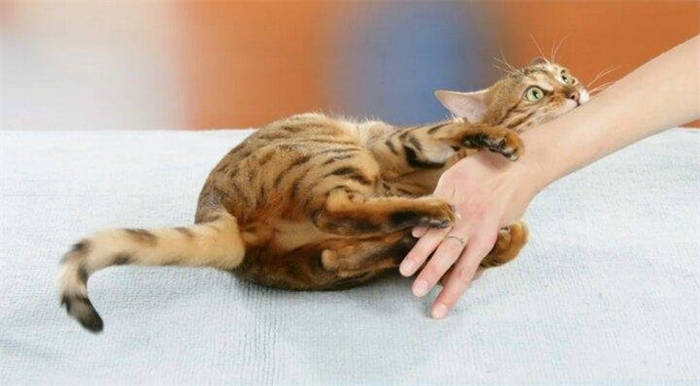
Why do cats attack the hand or leg of their owners in the first place ❓.
In general, cats may attack their owners for various reasons. Well, you lie quietly, and the cat just jump on your hand or leg, and grab it, that sometimes it is difficult to unhook. Well, what is it, we love our cats, and they do?
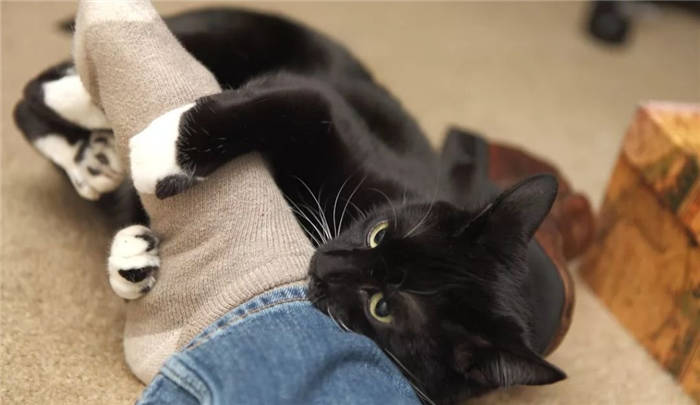
Cats should not be offended, because they have an explainable reason:
Cats are carnivores. They have all day long accumulated predator energy, which prepares cats for the hunt. And if your cat doesn't have anything to do, it has energy stored up and needs to go somewhere. This is why the cat runs around the house like a mad dog and attacks its owners.
If the owners have accustomed the cats to play with their hand and foot since childhood, it is clear that this form of play will persist in the cat even in adulthood. To play with cats, it is better to use different cat toys that are sold in stores.
No matter how you look at it, but among cats and cats there are some that feel they are the masters in the house, these cats will attack the hand and foot of the owners, which would show who is more dominant in the house. Usually, these are cats and cats with strong and courageous character and "spirit".
Sometimes, cats will attack the hand or leg of their owners without releasing their claws on their paws, indicating that the cat treats you playfully and in a friendly manner. And if accidentally bitten or scratched, the cat can immediately lick, as if to say: "sorry.
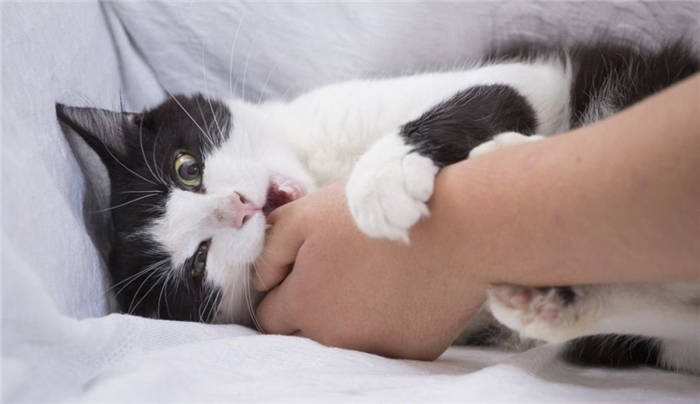
Causes of cat attacks
To correct the negative elements of the pet's behavior, you should first understand the reasons for them.
- is not accustomed to safe play and correct behavior with humans. If the kitty was played with hands from childhood and specially warmed up in it predatory habits, it becomes the norm to bite or bite a person. Such dominant mini-tiger can easily give a blow to its owner with its clawed paw, being in a bad mood, or, not holding back, display overdirected aggression, grasping at its teeth;
- is a representative of a breed with choleric-aggressive and extremely independent character, having highly developed instincts: territorial, hunting, self-preservation (for example: savannah, manul, rushy cat, Mekong bobtail, Siamese, Siberian, Abyssinian, Bengal cat). Such a creature can become angry when a stranger invades its private space, noisy and fussy surroundings, attempts to pet, pick up, touch its food bowl or toys;
- Is under constant stress because of the stressful atmosphere in the home. Prolonged repairs, noisy gatherings and scandals do not remain unaffected by the pet's psyche, lowering the threshold of excitability and even leading to neurosis;
- has a negative past experience with people in the form of coercion or rough treatment. It is not easy to establish contact with a moustached striped animal if it once experienced fear and pain due to the fault of the person and now perceives it as a source of potential danger;
- Deprived of attention from the owner, not having an outlet for the accumulated energy and hunting instincts. One should not think that an independent murky will be happy, mechanically receiving from the owner only a portion of food and a change of the litter box. Cats are very intelligent and sensitive animals that need affection, care, and attention. Therefore, when left alone all day, the cat will temperamentally express all its emotions when the owner returns home in the evening;
- Is pregnant or has already become a mother, instinctively guarding her territory and access to the nest with her precious babies.
How to wean a cat from clawing its legs
With the right approach, cats are quite amenable to training: the main thing is to do it consistently, purposefully, without harsh physical punishment. Hitting or yelling will only increase distrust and negativity.
- Give the command "No!" or "No!" during a moment of aggression, backing it up with a loud noise effect, like clapping your hands or making the sound of a pot lid falling on the floor. Later on only a vocal marker will be enough, and after some time the bad habit will be levelled at all;
- splash the aggressor with water from a spray bottle every time he/she does it. Cats do not like water, so a cold shower" perfectly reduces the heat of passion;
- switch the hunting instinct to another object by throwing bouncing balls or ice cubes in front of the attacking "pet carnivore
- not to snatch the arm or leg from its claws, provoking a stronger hold, but to press the animal to the floor with the second hand at the withers until it loosens its grip. Such a trick in the animal world is always used by dominant and powerful animals, standing on a higher step of the hierarchical ladder;
- Do not provoke by forcing your attention or games on an animal with a mustache. An animal with a soft temperament will try to avoid its owner, while a self-confident animal may attack back;
- Give an outlet to the hunting instincts of the mini-tiger, play only at a distance, using teasing sticks or "fishing rods" with bait, which will allow the pet to psychologically separate the "prey" allowed to attack from the human body.
Undoubtedly, it's easier to raise a cat from a very young age – after all, a kitten who hasn't been taught to claw and bite people's body parts seriously or at play, will grow up and do it again and again, feeling that he can do anything he wants.
Tell me, does your cat have this habit? How does it cope?
😺5 reasons why a cat grabs his legs
It's not nice when a furry bully starts preying on the owner's legs. Suddenly jumps out from behind a corner and bites into the ankle with claws and teeth. It hurts to even read about it! Maybe someone is willing to endure such an execution, but most will want to understand the reasons for this behavior.
1. wants to play
If we are talking about a small kitten, this way he invites the owner to play. Or he is teething and has a natural need to chew.
A special toy will help and he will be happy to catch and chew on it. Do not forget that the kitten, like all children needs play. At least a couple of times a day for 10 minutes.
2. The cat is lonely.
If an adult cat is engaged in this kind of diversion, it means that she is simply bored. Maybe she needs outdoor games.
You may need a toy-traps, maze-toys or multilevel kitty houses. You should pay more attention to your cat, pet him, and talk to him. A kind word to the cat!
3.
Cats are very sensitive to smells. Strangely enough, some pets like the smell of stale socks, but there are those who are irritated by it.
The cat will rush to its feet, trying to clear its territory of unpleasant elements.
4. The cat is sick.
When a furry friend is bothered by something, he often becomes aggressive and sensitive. Any little thing can throw him off balance.
If the cat has never had such behavior before, and the last few days it seems to have been replaced – you should go to the veterinarian.
5. Kitty grew up
The time has come and the little fluffy became an adult. And now he really wants to meet the opposite sex, but the owners do not allow it. From this, he becomes nervous and irritable.
There are two options for solving this problem: spay/ neuter or give the pet what it needs – a girlfriend or friend.






